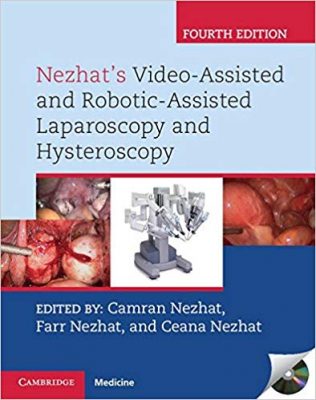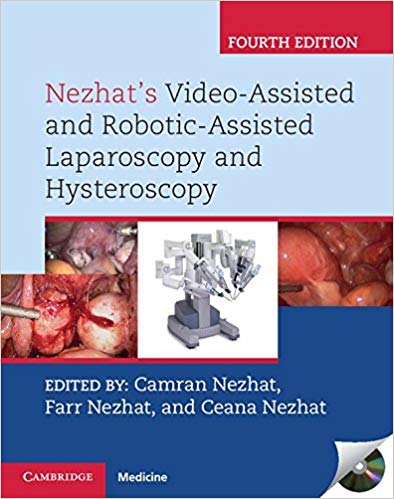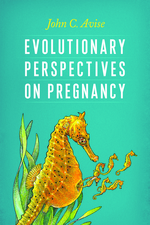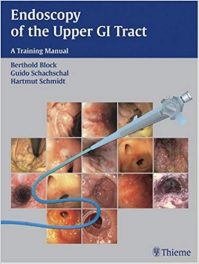 Editors: Camran Nezhat, MD; Farr Nezhat, MD; and Ceana Nezhat, MD
Editors: Camran Nezhat, MD; Farr Nezhat, MD; and Ceana Nezhat, MD
Publisher: Cambridge University Press – 708 pages
Book Review by: Sonu Chandiram
The first use of anesthesia in 1859 revolutionized medicine and surgery in the nineteenth century, making operations painless for patients, and anxiety-free for surgeons. four decades later in 1901, laparoscopy signaled another revolution, enabling surgeons to do their job with smaller incisions, and making recoveries shorter for patients.
The Iran-born Dr. Camran Nezhat, one of the three editors of this book along with his brothers Farr and Ceana, has shown to the medical community that laparoscopy – which used to be called “keyhole surgery” in years past – is a much more efficient way of viewing observing many forms of abnormalities, anomalies, conditions, diseases and disorders in patients in his specialty of gynecology and obstetrics.
Dr. Camran Nezhat has also shown that not just endoscopy but also surgery is more efficient with laparoscopic procedures. These are taken up in detail in chapter 4, Laparoscopic Access, and in chapter 5, Laparoscopic Suturing.
In the Introduction to chapter 4, the chapter authors point out these distinct advantages of abdominal laparoscopy over culdoscopy:
- A better view of the pelvis
- Decreased chance of infection
- Improved access to the pelvic organs and cul-de-sec
- Easier application of surgical procedures
Look at the various sketches from pages 42 to 51 of this chapter to understand why access with laparoscopy is superior.
In the Introduction to chapter 5, the chapter authors begin to present their ‘systematic approach to learning laparoscopic suturing’ and discuss the technologies that aid these processes. They write: “The foundation of the systematic approach to laparoscopic suturing depends upon an understanding of the geometric relationships between the anatomy, the instruments, the needle, the suture, and the camera.
The authors explain that this chapter breaks down the complex tasks of laparoscopic suturing and ‘knot-tying’ into smaller ‘manageable parts’ but also ‘avoids over-simplification.’ As you all may know by now, learning skills successfully begins first by knowing your goal, and then practicing the necessary tasks as many times as you can until you have mastered those skills. This chapter is divided into two parts: the first one describes the geometric relationships of various port placements, and the second part discusses the systematic approach to suturing broken down into a step-by-step process.
One hundred forty-six specialists and associates in gynecology and obstetrics and related areas within reproductive medicine such as gynecologic oncology, infertility, reproductive endocrinology; as well as in minimally-invasive and robotic surgery, pediatric surgery and other fields, authored the 25 chapters of this book that we name below to provide you an overview of the contents of this book.
The editors and contributors have their origin and current residence over the United States and 10 other countries – Canada, Egypt, France, Germany, Greece, Israel, Italy, New Zealand, Saudi Arabia and Turkey.
- A History of modern video-assisted endoscopy
- Equipment
- Anesthesia
- Laparoscopic access
- Laparoscopic suturing
- Intra-peritoneal and retro-peritoneal anatomy
- Hysteroscopy
- Fertility
- Management of adnexal masses
- Endometriosis
- Laparoscopic adhesioloysis and adhesion prevention
- Laparoscopic sterilization
- Leiomyomas
- Hysterectomy
- Pelvic floor procedures
- Laparoscopic treatment of chronic pelvic pain
- Gynecologic malignancy
- Laparoscopy in the pregnant patient
- Minimal access pediatric surgery
- Laparoscopic aortic surgery today
- Additional proce4dures for pelvic surgeons
- Simulators for learning basic skills, tasks, and endoscopic surgical procedures
- Robot-assisted laparoscopy
- Complications in laparoscopy
- Fetal Therapy
Appendix 1: Medical equipment images
Appendix 2: Image atlas
Appendix 3: Video legends
This is an excellent resource – book and DVD – on a growing field of laparoscopy, with robotic and video assistance. The editors and authors of this book have done a marvelous job, made a very valuable, pioneering contribution to it. They are hereby commended.
Editors:
Camran Nezhat, MD, FACOG, FACS is Chair of the Association of the Adjunct Clinical Faculty (AACF) at Stanford University School of Medicine in Stanford, California; Fellowship Director of the Center for Special Minimally Invasive and Robotic Surgery; Adjunct Clinical Professor of Obstetrics and Gynecology (OB/GYN) and Surgery at Stanford University; and Clinical Professor of OB/GYN at University of California in San Francisco, California.
Farr Nezhat, MD, FACOG, FRCS is Professor of Clinical Obstetrics and Gynecology at Columbia University College of Physicians and Surgeons; Director of Minimally Invasive Surgery and Gynecologic Robotics (MISGR) Fellowship program; and Director of the MISGR Fellowship program in the Division of Gynecologic Oncology at St. Luke’s – Roosevelt Hospital Center in New York, NY.
Ceana Nezhat, MD, FACOG, FACS is Fellowship Director of the Atlanta Center for Special Minimally Invasive Surgery and Reproductive Medicine; Adjunct Clinical Associate Professor of Gynecology and Obstetrics at Emory University School of Medicine; and Adjunct Clinical Associate Professor in the Department of Obstetrics and Gynecology at Stanford University School of Medicine in Stanford, California.







